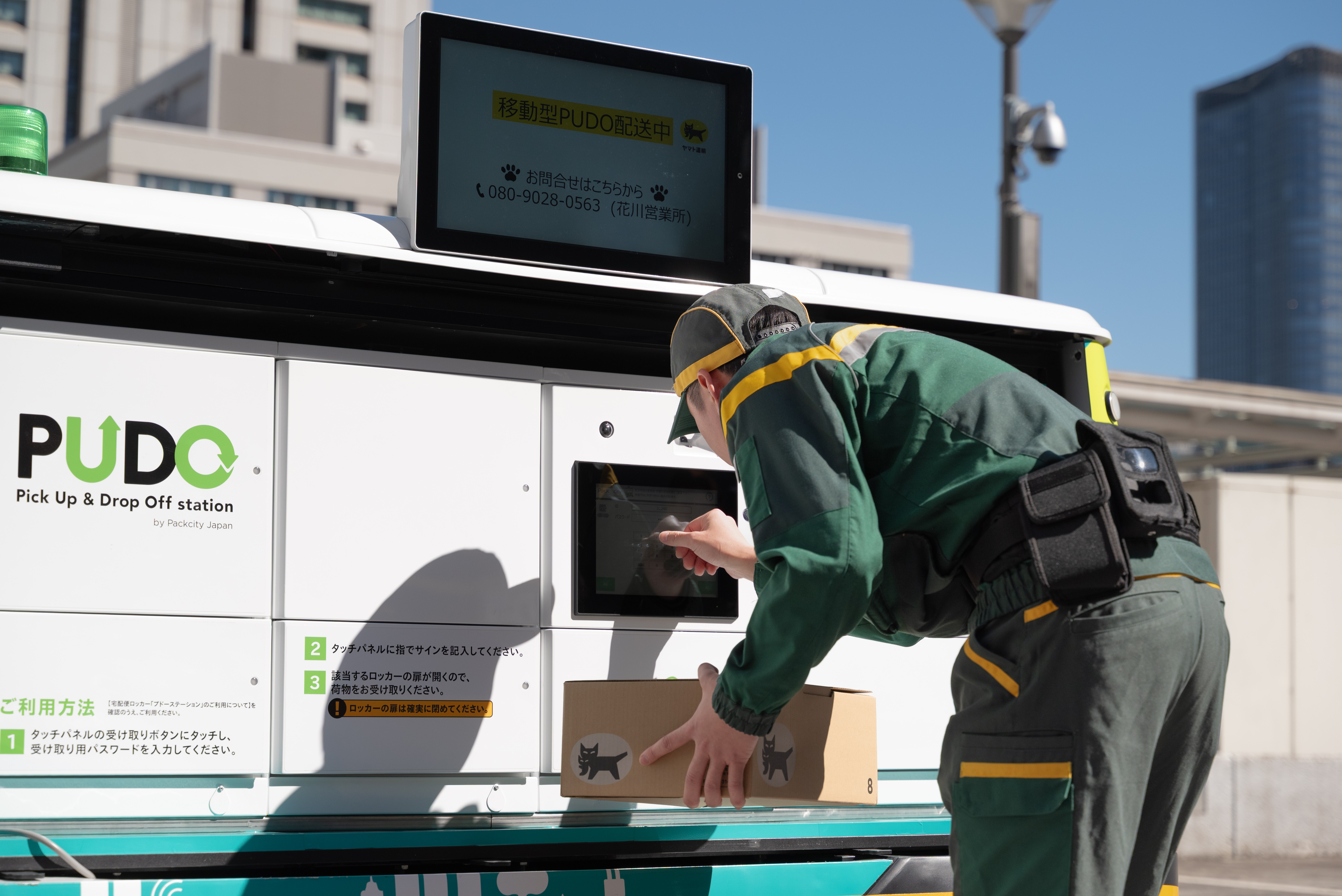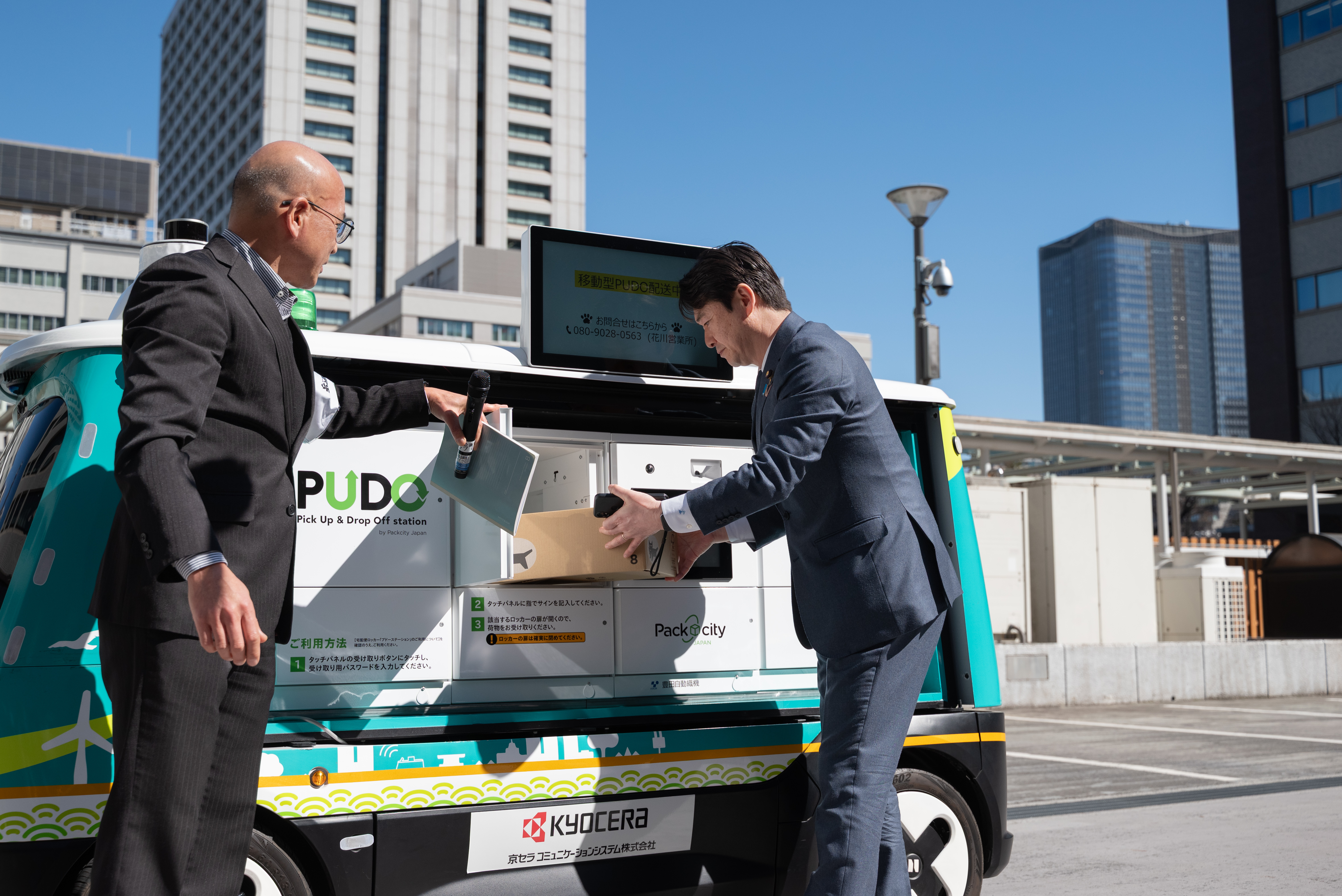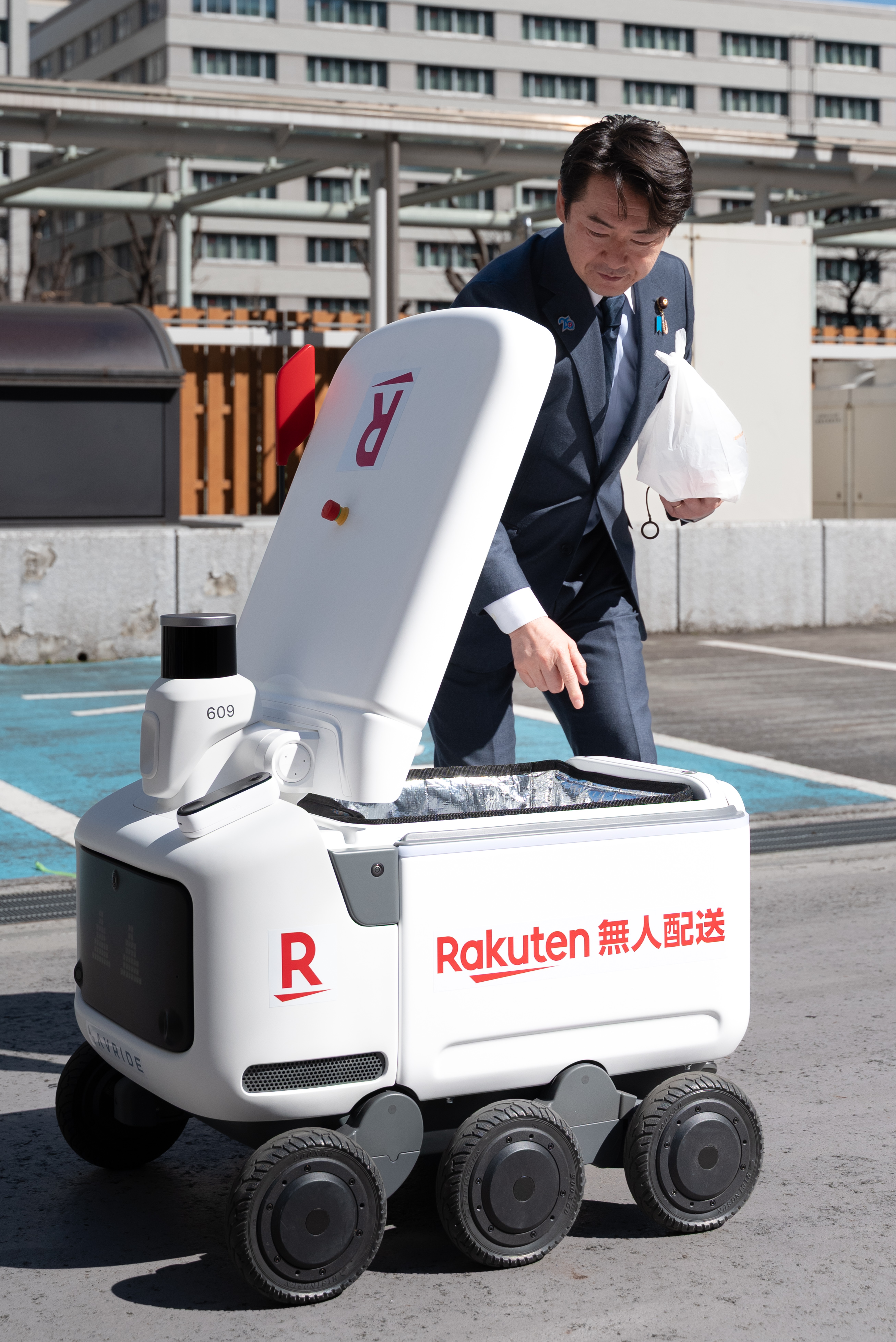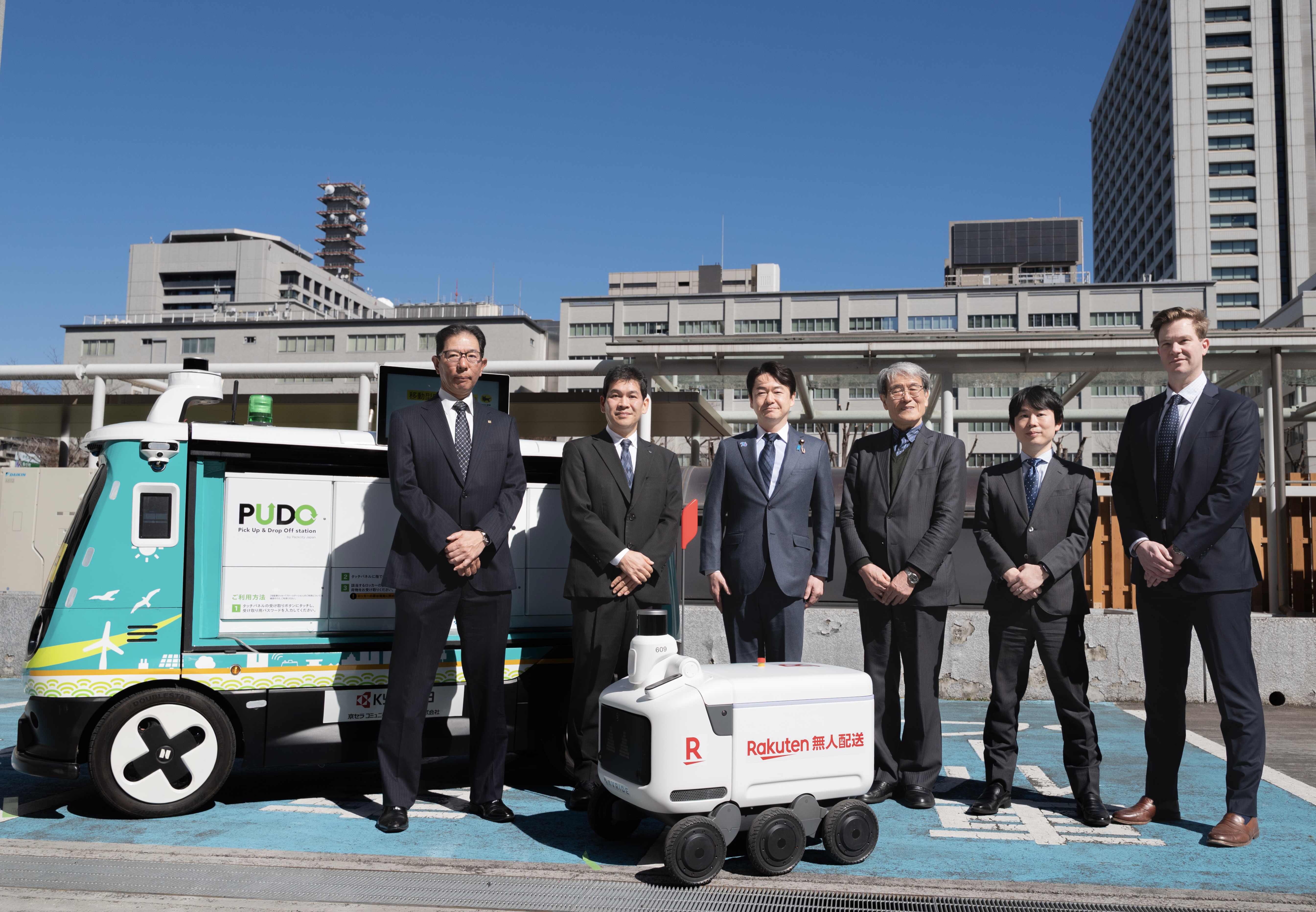- Home
- News Releases
- Back Issues
- February FY2025
- Future Perspectives on Autonomous Delivery Robots Compiled
Future Perspectives on Autonomous Delivery Robots Compiled
Aiming to solve societal challenges by improving the delivery capability of robots
February 26, 2025
Aiming to overcome labor shortages and other challenges in the logistics industry, the Ministry of Economy, Trade and Industry (METI) has been advancing efforts aimed at the public implementation of autonomous delivery robots.
In July 2024, METI established the Working Group for Discussing the Social Implementation of Autonomous Delivery Robots with Higher Delivery Capability. In response, the working group held repeated discussions with experts and businesses and compiled the discussions results into a report containing ideal approaches to such robots and a roadmap toward their public implementation.
1. Background
Autonomous delivery robots are robots which deliver a variety of packages and products handled by distribution bases and retail stores. Aiming to overcome challenges faced by the logistics industry, including the issues of labor shortages and consumers who have difficulty shopping, METI has been advancing efforts aimed at the public implementation of autonomous delivery robots. In accordance with the enforcement of the revised Road Traffic Act in April 2023, small, low speed, automated delivery robots are now allowed to operate on public roads, and the full-fledged public implementation of automated delivery services has started.
In recent years, countries around the world have been expanding delivery services that make use of high-speed, large, autonomous delivery robots with higher delivery capability, rather than small, low speed robots. Aiming at the full-fledged public implementation of such robots with higher delivery capability, METI and the New Energy and Industrial Technology Development Organization (NEDO) established the Working Group for Discussing the Social Implementation of Autonomous Delivery Robots with Higher Delivery Capability (hereinafter referred to as the “working group”) in July 2024, which consists of experts, businesses, and related organizations. In response, the working group held repeated discussions on the ideal approaches to implementing such robots.
2. Overview of the report
The working group mainly focused on the following three points (expected use cases, specifications and operation of robots sought by industry, and a roadmap toward public implementation), and compiled the opinions offered by experts and businesses into a report.
(1) Expected use cases
The report focuses on use cases of autonomous delivery robots with higher delivery capability and mainly discussed three use cases, namely home delivery, mobile vending, and business-to-business (B2B) transport.
Being faster and larger than small, low speed robots, autonomous delivery robots with higher delivery capability can increase the maximum load capacity and operation rates and shorten the delivery time per. These advantages are expected to further increase the opportunities for robots to play more various roles, including the delivery of small parcels at higher frequencies, the sales of products at unmanned mobile stores, and wider delivery areas for quick commerce.
(2) Specifications and operation of robots sought by industry
The report provides a compilation of potential specifications and operational restrictions for robots when operating on public roads based on demand from industry, as an approach to achieving practical results from the expected use cases. For example, it presents a potential stipulation that the body of a mid-speed, medium robot smaller than a light motor vehicle could operate at a maximum speed of 20 km/h keeping close to the left side of the road.
As it is critical to consider such viewpoints as securing safety and harmonizing with the existing modes of traffic, METI will strive to facilitate future efforts aimed at the public implementation of these robots while holding repeated discussions with related ministries and agencies.
(3) Roadmap toward public implementation
The most significant goal is to refine development approaches to the robots through repeated demonstration tests by a variety of businesses.
The roadmap defines the coming three years as a period of intensive demonstration tests to achieve the early public implementation of the robots, and based on this, it stresses the importance of holding specific discussions with related ministries and agencies after knowledge-sharing among stakeholders and refining ideal approaches to developing and implementing the robots.
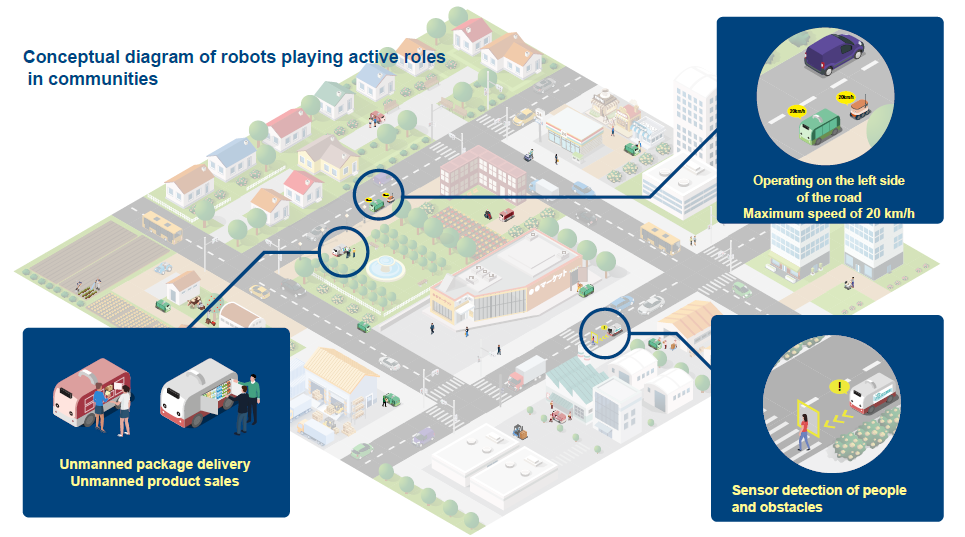
3. Press event about the robots
METI and the Robot Delivery Association jointly held a press event to showcase such robots at a METI site.
With the attendance of Mr. Kato Akiyoshi, Parliamentary Vice-Minister of Economy, Trade and Industry, the event provided a robot demonstration following a group photo. Specifically, it showcased a mid-speed, medium robot and a mid-speed, small robot. Parliamentary Vice-Minister Kato observed these robots in operation and received a package.
The successful public implementation of new mobility services requires the enhancement of social acceptance, including significantly raising awareness among the public as a first step.
Going forward, METI will continue to facilitate the public implementation of autonomous delivery robots while advancing collaboration with a variety of businesses in related industries, including the Robot Delivery Association, as well as with related ministries and agencies.
*Note: The robots showcased at the event were classified as mid-speed, medium robots and mid-speed, small robots based on their operation records on public roads in Japan and those on roads overseas (operation records with a maximum speed greater than 6km/h). Please note that currently Japan has not yet created clear definitions for mid-speed, medium robots or mid-speed, small robots and that the demonstration of these robots at this event does not represent a guarantee that they will be able to operate on public roads in Japan.
Related Materials (in Japanese)
Division in Charge
Logistics Policy Planning Office, Commerce and Service Industry Policy Group
